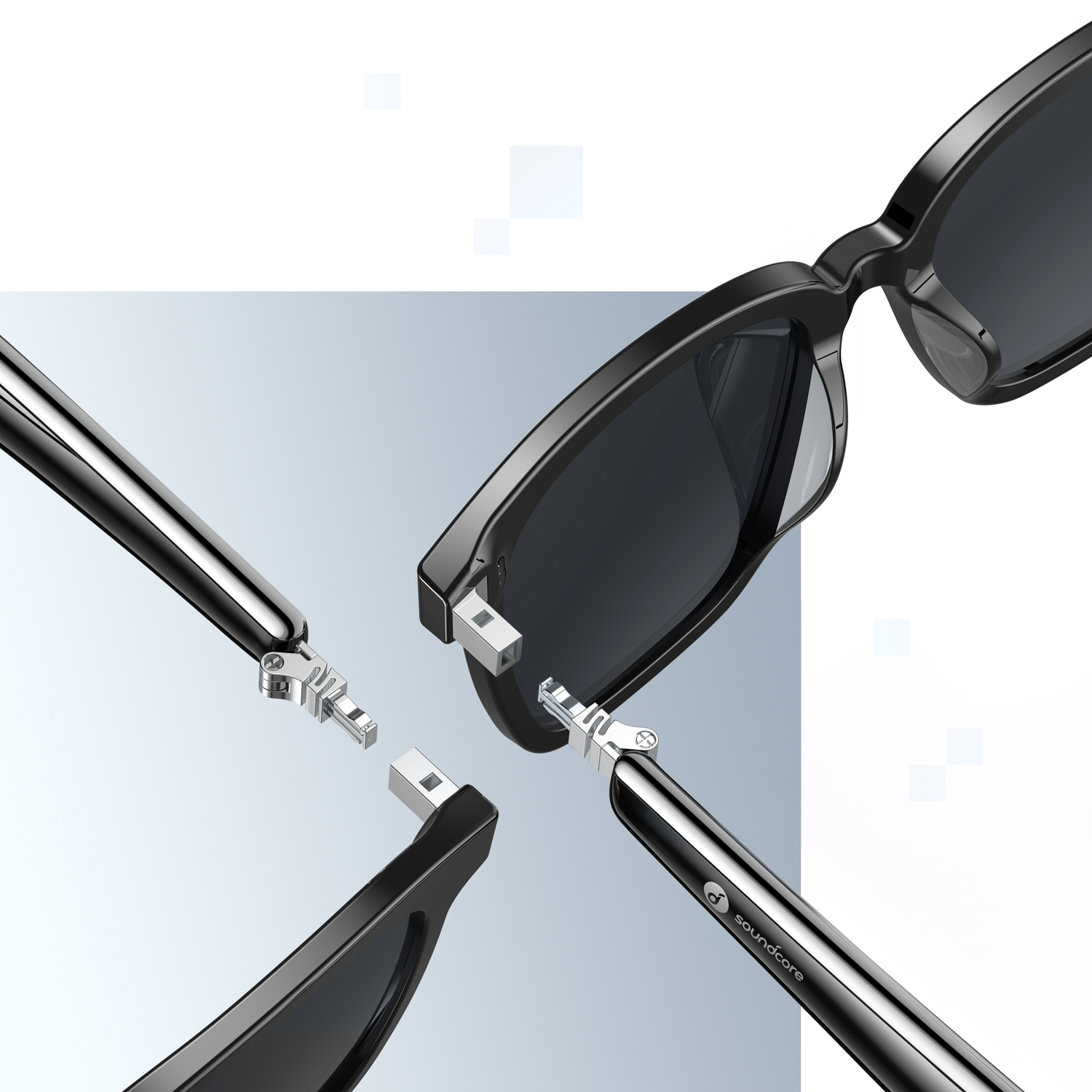Soundcore Frames take on the audio glasses market with slim, light and customizable shades
Soundcore expands to glasses

Anker is expanding into audio glasses with Soundcore Frames: a new piece of audio eyewear armed with dual-drivers and multiple mics, to merge open-ear sound with your daily pair of specs.
There are three problems with this category, all of which are summed up in my Razer Anzu review. The glasses are usually too big and too heavy to be comfortable to wear, the speakers are too tinny and the novelty factor doesn’t make up for the fact they’re usually too expensive.
Soundcore responds to that last problem with a lower cost of $199 (£149), but let’s go in deeper about the first two, as I’ve had some hands-on time with Soundcore Frames.
- Read my Soundcore Liberty 3 Pro review
- What’s the story about Ray-Ban Stories: the Facebook glasses?
- Xiaomi Smart Glasses revealed: MicroLED display brings true AR into focus
Slim, light and customizable
From the get go, Soundcore approaches this differently with a lighter, slimmer design, of which there are 10 different frame styles and multiple sizes to choose from. Touch controls can be found on the side near the front corner of the frames, giving you a range of tap and swipe gestures to use.
One additional benefit of Soundcore’s Frames that put these beyond its current competitors is the customizability of them. The Anzus gave you the choice to pop out the lenses and pick between blue light of sunglasses. Instead, the Frames let you switch the entire visual style of the frame with what Anker’s calling a Pull and Plug quick release system.

Just pull the stems off and replace the frame with whatever you wish, including the aforementioned blue light and tinted options, to even prescription lenses. These interchangeable frames are set to come in all shapes and sizes, at a price of $49.99 (£49.99).
In my short time with them, this design felt lighter, slimmer and more comfortable to wear than other audio glasses I’ve tested in the past. And in practice, the interchangeable frames and stems are well-priced and greatly expand customizability, but I’ve got some early hesitations around the durability of that pin connector. Can they be bent easily by accident? Are they hard to fix if you do?
Sign up to receive The Snapshot, a free special dispatch from Laptop Mag, in your inbox.

For comparison, the Razer Anzu were just too big and too heavy for even me and my giant noggin to look normal wearing. Bulkier stems hold all the technology and put the 47g weight pressure directly on top of your ears — making for an uncomfortable listening experience after minutes of use.
Oh, and with a claimed 5.5-hour battery life and fast charging giving you 1.5 hours more after a 10-minute charge, this falls in line with the competition. Again, as I said in the Anzu review, I’d love to see any pair of audio glasses have the stamina to last an entire working day, but this is good enough.
Sounding clear
This category seemingly exploded in the early stages of the pandemic, as it became a more stylish video meeting option than wearing a giant pair of cans. Soundcore’s Frames are built for that with noise reducing microphones, to isolate your voice and neutralize any background distractions. Plus, a private listening mode squashes out any echo caused by noise leakage of the speakers in the stems, which was a common problem I faced with the Anzu.

Speaking of sound, Anker has created a patented OpenSurround system, which consists of two custom drivers in each stem: one in front of the ear and one behind. The intention is to surround the ear with sound that stops when you take them off, thanks to on-ear wearing detection.
From personal experience, they sound good. Not great, but decent with some warmth I never got from Razer’s Anzu. But without bone conduction audio, this category is always going to struggle.
Outlook
For every feature of the Soundcore Frames that you should be excited about, there’s a design choice or spec omission that seems a little strange to me.
The problem with audio eyewear has always been their hefty size and weight, alongside tinny audio making them very limited devices. Anker seeks to resolve that with these skinnier, interchangeable frames and from personal experience, the bass is better than what I found on the Razer Anzu; all for a lower cost.
As for the broader questions of how good these actually are, wait for our review. If you can’t wait, you can pick up a pair soon, as they launch in mid-November.

Jason brought a decade of tech and gaming journalism experience to his role as a writer at Laptop Mag, and he is now the Managing Editor of Computing at Tom's Guide. He takes a particular interest in writing articles and creating videos about laptops, headphones and games. He has previously written for Kotaku, Stuff and BBC Science Focus. In his spare time, you'll find Jason looking for good dogs to pet or thinking about eating pizza if he isn't already.
